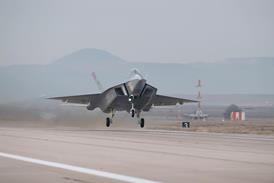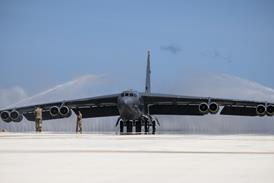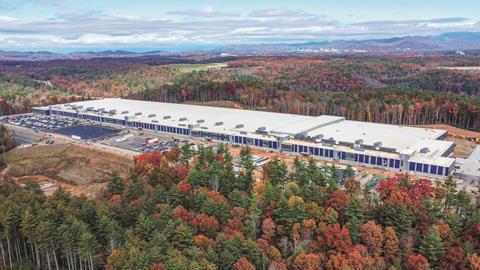Just 18 months after shipping its first component – a high-pressure turbine vane – Pratt & Whitney’s new airfoil plant in Asheville, North Carolina, is growing fast, with output set to double this year under an expansion plan. The project is crucial for the business’s GTF and GTF Advantage ramp-up ambitions, as well as programmes such as the F135 and the F135 Engine Core Upgrade for the Lockheed Martin F-35 Lightning II and the PW800 business jet engine.

Across RTX, the company continues to invest in its US industrial base. Over the last five years, RTX has invested nearly $10 billion to enhance its domestic manufacturing footprint and the company is planning another $2 billion investment to further increase US capacity in 2025. The facility in Asheville is a key part of these investments and in January, RTX kicked off a $285 million investment to expand the site’s foundry, bringing its total commitment in Asheville to nearly $1 billion.
The 111,000sq m (1.2 million sq ft) facility, first announced in October 2020, will ultimately house an advanced casting foundry, with machining, coating, and finishing carried out on site. While it complements work done across other Pratt & Whitney facilities and RTX’s wider supply chain, Asheville is the company’s first in-house facility dedicated to turbine airfoils and reflects Pratt & Whitney’s commitment to meeting rising market demand for GTF and other key engines.
Pratt & Whitney’s Asheville general manager Dan Field explains how the plant fits into the business’s wider strategy for leaner manufacturing. “Currently we have a complex value stream, with parts often travelling 2,500 miles [4,000km] and making nine stops throughout the manufacturing process,” he says. “The opening of our Asheville facility makes that process much more simplified and efficient, with parts being manufactured solely within the walls of this building. Once our foundry is up and running in 2028, Pratt & Whitney will become the first engine manufacturer to produce its own castings in house.”
The advanced turbine airfoil castings produced at Asheville will go into the GTF Advantage, helping to make the new engine up to twice as durable as the current GTF model. And the vertically integrated factory will also underpin Pratt & Whitney’s ability to produce the Advantage at scale.

Pratt & Whitney is on pace to reach its target of a trained workforce of 1,200 Asheville employees by 2027, despite the challenges of setting up a greenfield operation in an area not known for its aerospace heritage. Field attributes much of that success to the support the business has received from the state and local government, and the area’s educational sector, including the Asheville-Buncombe Technical Community College (AB-Tech). “There’s a tremendous talent pool to draw from,” Field says, noting that nearly nine in 10 hires are local to western North Carolina.
The company’s arrival in Asheville has also been a welcome boost for a region that was hit hard by catastrophic floods following Hurricane Helene in 2024. Field says support from the governor, county leadership, and congressional members has been key: “We have been welcomed into the community.”
Pratt & Whitney at 100

To mark the centenary of Pratt & Whitney, FlightGlobal has partnered with RTX to produce a souvenir special looking at the legacy and future of one of the industry’s most powerful and influential brands.
- 1
- 2
- 3
- 4
- 5
- 6
- 7
- 8
 Currently
reading
Currently
reading
Pratt & Whitney at 100: Manufacturing – advancing in Asheville
- 10
- 11
- 12
- 13

















































